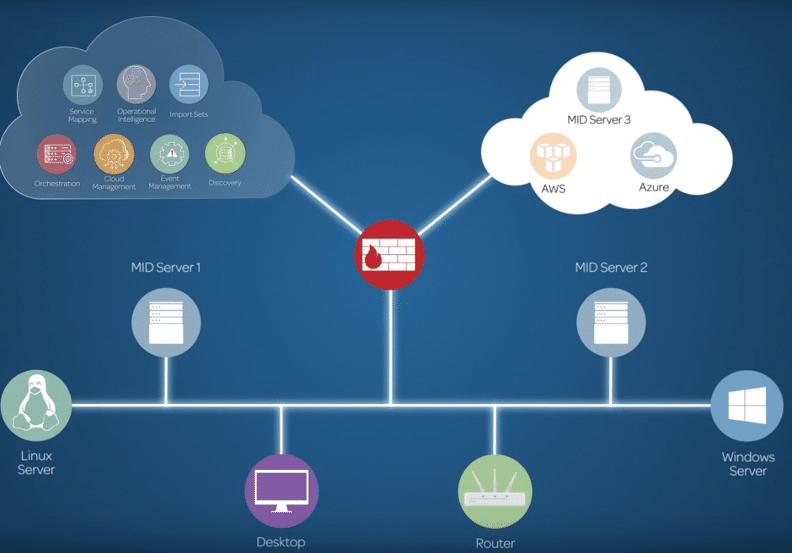The Impact of ServiceNow Discovery for IT Asset Management
In the last decade, there has been tremendous growth in the need for business IT assets for businesses to remain productive and profitable. Because of this growth in IT infrastructure, IT business teams are finding it difficult to manage, monitor, track, and analyze infrastructure and map it to business services. It’s hard for IT teams to prioritize critical events and manage dynamic IT assets. To ensure a hassle-free approach to managing IT assets and promote better business decisions, ServiceNow offers the Discovery feature in IT Operations Management (ITOM).
How Improper IT Asset Management Can Affect Your Business
Here are some of the key issues that arise due to improper management of assets:
- Financial Impact: Lost employee productivity, small return on investments or assets.
- Customer Impact: Inability to derive revenue from new products, inability to expand the existing customer base.
- Operational Impact: Underutilization of assets, inaccurate forecasting, and planning, delayed delivery of services.
- ITOM Impact: Unreliable approach to ascertain IT resources, difficult to track changes occurring in on-premise, cloud, and serverless infrastructure. This results in a lack of transparency. Inconsistencies in data lead to bad decisions and raises the following concerns:
- Lack of information about how infrastructure events are connected to services
- Updating the configuration management database automatically is challenging
- Analyzing the source and impact of the problem on services with precision is impossible
- No ability to consolidate information into a single system of record
How ServiceNow Discovery Solves Challenges of IT Asset Management
Prior to understanding how ServiceNow discovery works, one should know how data is stored, its hierarchy and best practices. The ServiceNow Configuration Management Database (CMDB) contains information about configuration items, then captures and stores the data about items in the form of tables. The configuration items can be hardware or software. This information is used to build a dependency view that enables us to understand the entire service management process.
Usually, IT teams rely on the CMDB to manage infrastructure changes and diagnose problems. If the right type of information is not provided, IT staff can’t locate services that are affected or predict the impact. Thereby leading to financial loss. ServiceNow Discovery solves all these issues.
ServiceNow Discovery also known as infrastructure and application discovery- provides a consolidated view of IT assets (including on-premise, serverless, and cloud services) and their relationship among other assets to enable IT teams to have distinct visibility into the service and update it back to CMDB. Discovery locates devices and applications in your network and stores in the CMDB. It provides IT with information on IT infrastructure and its changes.
ServiceNow Discovery determines communication between devices and applications. These relationships can be viewed using a dependency viewer. Whereas service mapping maps devices based on the service-specific dependencies.
ServiceNow Discovery has a lightweight Java application called Management, Instrumentation, and Discovery (MID). The server runs and gathers information about devices and applications and returns outcomes back to the instance for processing. Multiple MID Servers are competent enough to manage thousands of devices and can be employed in various network segments to deliver improved virtual scalability. The MID services use probes and sensors to gather and process information from the network. The MID server and instance communications are secured TLS and initiated from the mid server to the ServiceNow instance. This allows the mid server to connect to the instance directly without having to open any ports on the firewall. MID Servers can be configured to communicate through a proxy server.
Capabilities of ServiceNow Discovery
- Discover, track and manage assets
- Handle data accurately and securely
- Create impact analysis with related Configuration Items (CI)
- Support service mapping to map the business layer
- Identify and manage new Configuration Items in CMDB
- Make use of IT asset data from the CMDB
- Real-time transparency into licensing and compliance policies
- Decrease cost and risk by creating a single record of asset management and IT change management
- Optimize business costs based on usage and strategic business priorities
Main Components of ServiceNow Discovery
ECC Queue is the normal connection between a ServiceNow instance and other systems that integrate with ServiceNow. It is a collection of records where each record is a message either from the ServiceNow system to some other system or from some other system to the ServiceNow system. Probes and sensors are used by the MID server to collect and process information from the enterprise network.
Four phases of ServiceNow Discovery
- Port Scans: Focus on categorizing the discovered device. Using a shazzam probe, port scans check for open ports in the network. There are certain port numbers provided for each device, the discovery makes certain assumptions and classifies the device according to the port number. For example, UNIX based platforms use port 22 and windows use 135.
- Classification: This phase attempts to classify the device precisely. Data is processed by sensors and is evaluated based on the criteria for each class of device.
- Identification: In this phase, CMDB records are examined to check if there are any identical devices found. If found, the record is updated with the latest information stored in the database.
- Exploration: Patterns are used to gather more detailed information to populate CI attributes. Data is collected and stored in the CMDB, which ensures detailed information.












